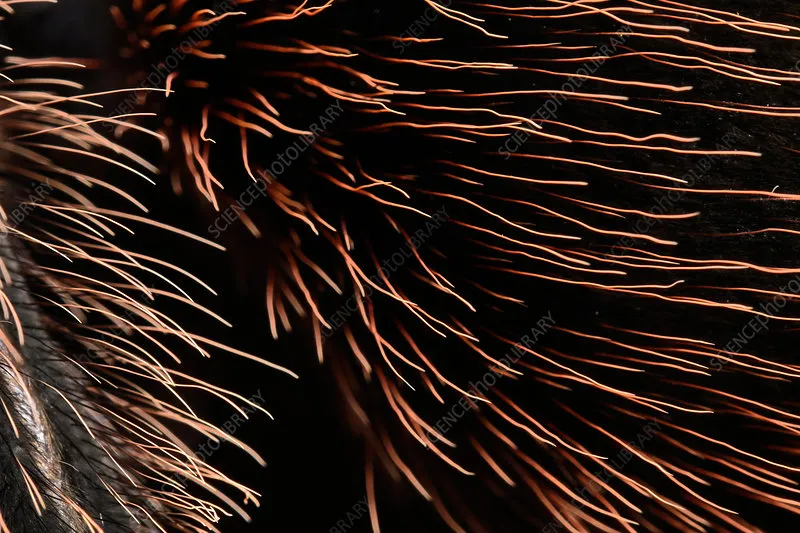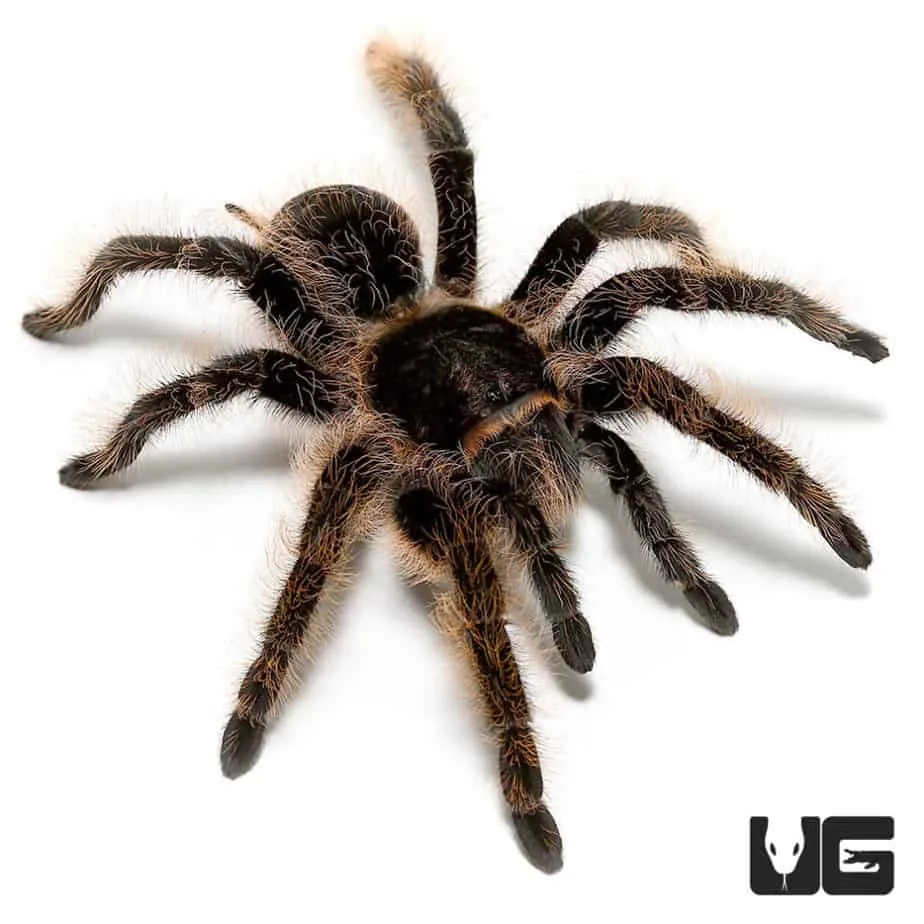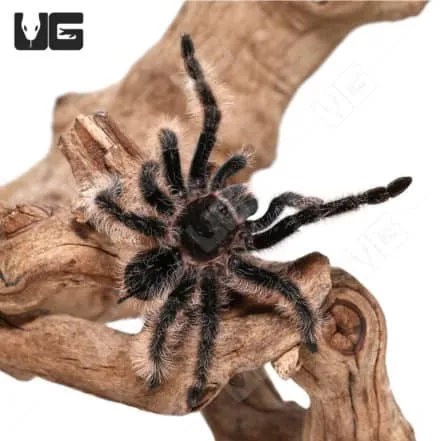The Curly Hair Tarantula: An Overview
The Curly Hair Tarantula (Tliltocatl albopilosus), a beloved species in the pet trade, captivates enthusiasts with its striking appearance and relatively docile temperament. Native to the rainforests of Costa Rica, this New World tarantula gets its name from the unique, curly hairs that adorn its body, particularly as juveniles. These spiders are known for their calm demeanor, making them a popular choice for both novice and experienced tarantula keepers. Their lifespan, with females often living for over a decade, adds to their appeal, offering a long-term companionship for those interested in the fascinating world of arachnids. Understanding the basic characteristics of the Curly Hair Tarantula sets the stage for delving deeper into their intriguing features, including their defense mechanisms.
What are Urticating Hairs?
Urticating hairs are a unique defense mechanism found in many New World tarantulas, including the Curly Hair Tarantula. These hairs are modified setae, or bristles, that are located on the abdomen. They are not designed for stabbing or injecting venom; instead, they cause intense irritation when they come into contact with the skin or mucous membranes of a potential predator. The hairs are typically barbed or have a similar structure that allows them to embed themselves in the skin, leading to itching, redness, and discomfort. This defense mechanism is crucial for the tarantula’s survival in the wild, deterring larger animals from making them a meal. Understanding the nature of urticating hairs is vital for responsible tarantula ownership and care. See image: urticating hairs close up.
The Purpose of Urticating Hairs

The primary purpose of urticating hairs is to protect the tarantula from predators. When threatened, the Curly Hair Tarantula can flick these hairs off its abdomen towards the perceived threat. This action causes a significant amount of irritation, which can deter the predator, giving the tarantula a chance to escape. The hairs are designed to be a nuisance, causing itching and discomfort that can last for several days or even weeks. This defense strategy is highly effective against a wide range of animals, from birds and mammals to other arthropods. The use of urticating hairs highlights the evolutionary adaptations of these arachnids to survive in their natural environments. This defense is key to their survival, as many predators would love to make a meal out of them. See image: tarantula defense
Curly Hair Tarantulas and Urticating Hairs
Fact 1: The Location of Urticating Hairs
Curly Hair Tarantulas, like most New World tarantulas, possess urticating hairs primarily on their abdomen. These hairs are not randomly distributed; instead, they are found in specific patches. They are not found all over the body. When the tarantula feels threatened, it uses its hind legs to brush the hairs off its abdomen and towards the perceived threat. These hairs are typically a reddish-brown color and are easily visible under magnification. While other tarantulas have urticating hairs in different locations or different types, the Curly Hair Tarantula’s specific location makes it easier to manage and avoid exposure to these hairs, which is important for keepers. See image: curly hair tarantula overview.
Fact 2: How They Deploy Their Hairs

The method by which Curly Hair Tarantulas deploy their urticating hairs is quite fascinating. When feeling threatened, the tarantula will use its hind legs to kick or flick the hairs off its abdomen. This action is often performed in a rapid succession, creating a cloud of irritating hairs. The hairs are propelled towards the perceived threat, where they can come into contact with the skin, eyes, or respiratory system. The effectiveness of this defense mechanism is greatly increased by the fact that the hairs are barbed or have other mechanisms to embed themselves, causing prolonged irritation. Understanding this behavior is essential for tarantula keepers to know how to avoid provoking this defense mechanism and how to respond if exposure occurs. See image: urticating hair reaction.
Fact 3: The Effects of Urticating Hairs
The effects of urticating hairs can vary depending on the individual and the degree of exposure. Common symptoms include intense itching, redness, and a burning sensation. The hairs can also cause irritation to the eyes and respiratory system, leading to coughing, sneezing, and watery eyes. In severe cases, prolonged exposure can result in skin rashes and blisters. The reaction is not an allergic one, but rather a physical irritation caused by the barbed hairs. While not life-threatening, the discomfort can be significant and last for several days or weeks. Proper care and understanding of the effects can help manage and mitigate the negative impact of exposure to these hairs. It is always a good idea to wear gloves and a mask when handling a tarantula. See image: urticating hair reaction.
Fact 4: Managing Exposure to Urticating Hairs
Managing exposure to urticating hairs is a crucial aspect of responsible Curly Hair Tarantula care. When handling the tarantula, always take precautions such as wearing gloves, long sleeves, and a mask to minimize the risk of contact. If exposure occurs, the first step is to avoid rubbing the affected area, as this can embed the hairs further. Instead, rinse the area thoroughly with water. Adhesive tape can be used to remove any remaining hairs from the skin. For eye irritation, flushing the eyes with water is essential. If symptoms persist or worsen, consult a doctor. Keep the tarantula enclosure clean to minimize the presence of airborne hairs. Proper ventilation will prevent hairs from spreading. See image: managing urticating hairs.
Fact 5: Difference Between Old World and New World Tarantulas

A key difference between Old World and New World tarantulas lies in their defense mechanisms. New World tarantulas, including the Curly Hair Tarantula, possess urticating hairs. They are typically less aggressive. Old World tarantulas lack urticating hairs, relying instead on potent venom and often displaying more aggressive behaviors. These tarantulas are more prone to bite if threatened, and their venom can be more potent. While both types of tarantulas have their own set of risks and characteristics, understanding these differences is critical for selecting and caring for a tarantula. Both species are beautiful and majestic. It is important to do your research. See image: old world vs new world.
Conclusion
In conclusion, the Curly Hair Tarantula’s urticating hairs are an important aspect of its biology and defense strategy. While these hairs can cause irritation, understanding their purpose and taking appropriate precautions can help keep keepers safe and still enjoy the beauty of these tarantulas. By appreciating the unique adaptations of the Curly Hair Tarantula, we can better appreciate their behavior and provide them with the appropriate care. Proper handling, habitat setup, and regular maintenance are all critical for ensuring a safe and rewarding experience for both the tarantula and its keeper. See image: tarantula habitat.
